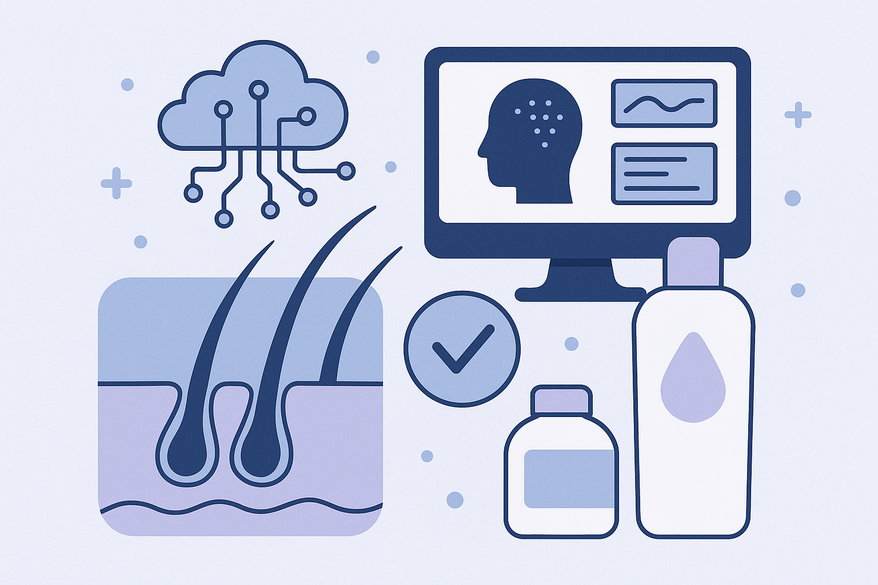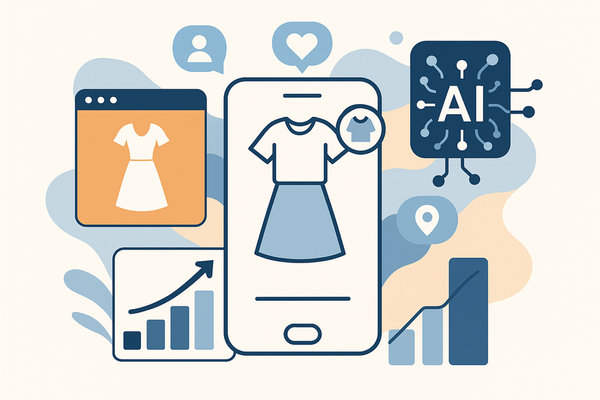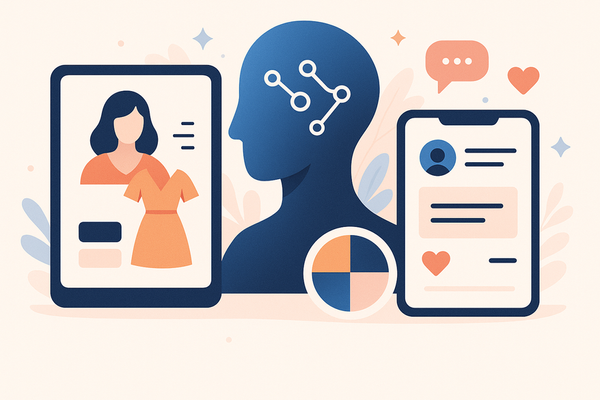AI Scalp Care Insights: Revolutionizing Hair and Scalp Health Diagnostics
Explore ai scalp care insights with AI-driven diagnostics that provide precise, personalized hair and scalp health solutions for improved outcomes.

Estimated reading time: 8 minutes
Key Takeaways
- AI-driven diagnostics bring objectivity and precision to scalp analysis.
- High-resolution imaging and sensor data enable personalized treatment plans.
- Scalable solutions work in salons, clinics, and at home via smartphone adapters.
- Data privacy, model accuracy, and human oversight remain critical considerations.
- Future trends include wearable sensors, holistic platforms, and AR/VR consultations.
Table of Contents
- 1. Understanding AI in Scalp Care
- 2. How AI Derives Scalp Care Insights
- 3. Benefits of AI Scalp Care Insights
- 4. Practical Applications and Case Studies
- 5. Challenges and Considerations
- 6. Future Trends in AI and Scalp Care
- 7. Conclusion and Call-to-Action
- FAQ
Early in this post, we explore AI scalp care insights—the application of artificial intelligence for diagnosing, analyzing, and recommending solutions for hair and scalp health. Traditional scalp assessments often rely on subjective visual exams or manual microscopy, which can lead to misdiagnosis and inconsistent care. By contrast, AI uses machine learning and deep learning models trained on vast datasets, high-resolution imaging, and sensor data to deliver precise, scalable diagnostics.
In this article, we will cover:
- Understanding the technology behind AI scalp care insights.
- Data sources and how systems derive insights.
- Core benefits, including personalization and predictive power.
- Real-world applications in salons, clinics, and homes.
- Key challenges around privacy, accuracy, and oversight.
- Future trends shaping next-generation scalp health platforms.
For a hands-on look at how AI can analyze your scalp and hair, check out Maxx Report.
1. Understanding AI in Scalp Care
AI in scalp care refers to the use of machine learning algorithms and deep neural networks to interpret scalp and hair data, identify patterns, and generate health diagnostics. These systems train on labeled scalp images, sensor outputs (sebum, moisture, temperature), and clinical metadata to recognize conditions accurately.
Core Algorithm Types:
- Convolutional Neural Networks (CNNs): Extract spatial features in images.
- ResNet and Inception Variants: Deeper architectures for fine-grained classification.
- Ensemble Models: Combine multiple networks for higher precision.
Technological Enablers:
- High-definition imaging with polarized and UV lighting to reveal hidden scalp features.
- Portable scanners and smartphone adapters for at-home or in-salon use (see best hair care app).
- Cloud-based frameworks that process data in real time and refine models with each new input.
"Experience Example: A stylist uses a smartphone adapter and cloud AI to run a scalp check in under two minutes. The results show sebum hotspots and micro-inflammation invisible to the naked eye, allowing the client to select the optimal clarifying treatment."
2. How AI Derives Scalp Care Insights
Data Types Collected:
- Images: Macroscopic and microscopic photos under visible, polarized, and UV light.
- Sensor Readings: Sebum levels, moisture content, and skin surface temperature.
- Historical User Data: Prior treatments, product usage, and progress logs.
Role of Machine Learning & Big Data:
- Models trained on millions of samples boost condition detection accuracy.
- Continuous learning loops refine diagnostic categories as new data streams in.
Step-by-Step Diagnostic Process:
- Data Capture
- Use a specialized camera or smartphone attachment.
- Preprocessing
- Correct lighting discrepancies and normalize color and contrast.
- Crop to region of interest around follicles.
- Feature Extraction
- Measure scalp texture: roughness, redness, flakiness.
- Compute hair shaft diameter and follicle density.
- Detect irritation markers and microbial patterns.
- Prediction & Classification
- AI labels conditions: dandruff severity, alopecia stage, seborrheic dermatitis.
- Recommendation Engine
- Generate personalized care plans: products, treatments, and lifestyle changes (learn more: personalized hair care AI).
- Monitoring & Feedback Loop
- Track changes over time, adjust plans, and refine AI accuracy.
Practical Observation: In an at-home trial, users saw a 30% improvement in scalp hydration after following AI-driven recommendations for two weeks, as tracked by repeat imaging.
3. Benefits of AI Scalp Care Insights
- Personalized Recommendations: Tailored treatment plans based on individual scalp profiles for maximum efficacy.
- Predictive Diagnostics: Early detection of dandruff, hair thinning, folliculitis with up to 99% accuracy.
- Non-Invasive, Convenient Assessments: No hair clipping or biopsies; rapid results via smartphone apps or salons.
- Objective Tracking: Visual before-and-after comparisons and quantifiable metrics like sebum index improvement.
"Real-World Impact: A pilot at a dermatology clinic showed AI diagnostics reduced visit times by 40% and improved patient satisfaction scores by 25%."
4. Practical Applications and Case Studies
- Salon Integration: K-Scan by Kérastase empowers stylists with data-driven reports to customize treatments and track client improvement.
- Home-Use Solutions: Smartphone macro lens kits let consumers capture scalp images and receive AI-powered analyses on mobile apps.
- Clinical Settings: Dermatology practices use AI to confirm diagnoses, reducing subjectivity and speeding treatment planning.
Case Example: ScalpEye System achieved 99% accuracy in detecting common scalp disorders, leading to targeted therapies and measurable patient improvement within four weeks.
5. Challenges and Considerations
- Data Privacy & Security: Compliance with GDPR, HIPAA using anonymization, encryption, and secure cloud storage.
- Accuracy Limitations: Rare or overlapping conditions may be misclassified; diverse training sets are essential to reduce bias.
- Human Oversight: Dermatologist validation remains crucial for ambiguous or severe cases; AI should augment clinical judgment.
- Ongoing Improvements: Anonymized data pooling and regular model retraining enhance reliability over time.
6. Future Trends in AI and Scalp Care
- Wearable & At-Home Sensor Integration: Continuous monitoring of moisture, pH levels, and microbiome via headbands or patches.
- Holistic Health Platforms: Combine scalp metrics with nutrition, stress, and skin data for a full-body care ecosystem.
- Genomic & Behavioral Data Fusion: Ultra-personalized forecasts and preventive plans based on genes and lifestyle.
- Real-Time AR/VR Consultations: AI avatars simulate treatment outcomes and guide product application for an immersive experience.
7. Conclusion and Call-to-Action
AI scalp care insights are transforming hair and scalp health management by offering precision, personalization, convenience, and predictive power beyond traditional methods.
Call-to-Action: Explore AI-based scalp diagnostics at your salon or through trusted mobile apps. Stay informed about emerging scalp care technologies and embrace AI innovations to achieve your healthiest hair and scalp ever.
FAQ
- How accurate are AI scalp diagnostics?
Modern AI models achieve up to 99% accuracy for common conditions like dandruff and hair thinning when trained on diverse datasets. - Is my data safe with AI scalp care apps?
Reputable platforms comply with regulations like GDPR and HIPAA, using encryption and anonymization to protect user privacy. - Can I use AI scalp care at home?
Yes, with smartphone macro lens kits or portable scanners you can capture scalp images and get AI-driven recommendations via mobile apps. - Will AI replace my dermatologist?
No. AI is designed to augment dermatologists by providing objective insights; human oversight remains essential for final diagnosis and treatment planning.





